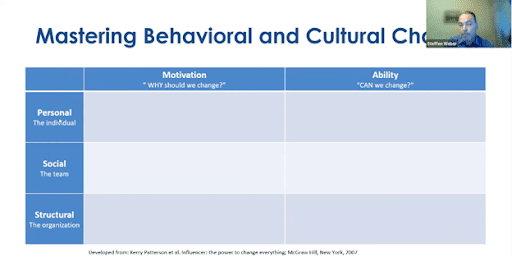
It’s often said that life is a rollercoaster, trundling between obstacles and successes. CGIAR is embarking on its own ups and downs as the One CGIAR transformation officially takes hold. There will be successes, and a strong, more impactful organization will be born. But we also expect some twists and turns. As we move down this track, we should consider the words of change management expert Steffen Weber, delivered at CGIAR Excellence in Breeding’s (EiB) recent Virtual Meeting 2021: “there’s no way to get the wrong change right, but a thousand ways to get the right change wrong.”
Weber argues that this is not just the case for EiB — but also for the entire CGIAR’s change management approach. Broad changes don’t just affect organizations per se but also teams and individuals. Like an ecosystem, change seeps into different areas of our lives — including the realm of our jobs.
The lessons Weber laid out can help us better ensure the CGIAR and NARES(National Agricultural Research and Extension Services) system gets the right change, right:

Steffen Weber describes the six levers for change that need to be considered all together to ensure willingness and ability to change on the personal, the social, and the structural level.
Recognize that transformation is personal
Weber noted that “every transformation is personal.” That means everyone working at an organization will have to ask the following questions: Why should I change? And can I operate in the new setup? Hence, One CGIAR starts with an individual’s perception which stretches to the team level where everyone influences other team members. On the structural level, the organization has to ensure that desired behaviors are amplified and that employees and teams can perform in the new setup. Leadership starts at the personal level and plays a key role on all levers. For example, the organization should ask: “How do we ensure the environment (equipment, infrastructure) is configured to support people to operate in the new setup?” But they must also focus on the person and ask: “How do we ensure s/he is trained on new capabilities and can operate in the new culture?”
*The first photo’s source is: HealthDay
